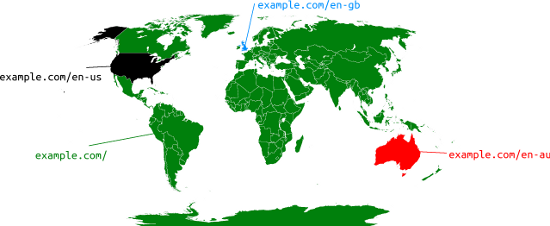Introducing "x-default hreflang" for international landing pages
Webmaster Level: All
The homepages of multinational and multilingual websites are sometimes configured to point guests to localized pages, either by means of redirects or by means of changing the content to mirror the person’s language. As of late we’ll introduce a new rel-alternate-hreflang annotation that the webmaster can use to specify such homepages that is supported via each Google and Yandex.
To see this in motion, let’s have a look at an example. The website instance.com has content material that ambitions users around the globe as follows:

- http://example.com/en-gb: For English-talking users in the UK
- http://instance.com/en-us: For English-conversing users in the US
- http://example.com/en-au: For English-speaking customers in Australia
- http://instance.com/: The homepage shows customers a country selector and is the default web page for customers international
On this case, the webmaster can annotate this cluster of pages the use of rel-alternate-hreflang using Sitemaps or the use of HTML hyperlink tags like this:
<link rel="alternate" href="http://instance.com/en-gb" hreflang="en-gb" />
<link rel="alternate" href="http://instance.com/en-us" hreflang="en-us" />
<hyperlink rel="alternate" href="http://example.com/en-au" hreflang="en-au" />
<link rel="alternate" href="http://instance.com/" hreflang="x-default" />
The new x-default hreflang attribute worth signals to our algorithms that this page doesn’t goal any particular language or locale and is the default web page when no different web page is healthier desirable. For example, it will be the page our algorithms attempt to express French-speaking searchers international or English-conversing searchers on google.ca.
The same annotation applies for homepages that dynamically alter their contents according to a user’s perceived geolocation or the Accept-Language headers. The x-default hreflang value alerts to our algorithms that this sort of page doesn’t target a selected language or locale.
As all the time, if you have any questions or feedback, please tell us in the Internationalization Webmaster Assist Forum.
